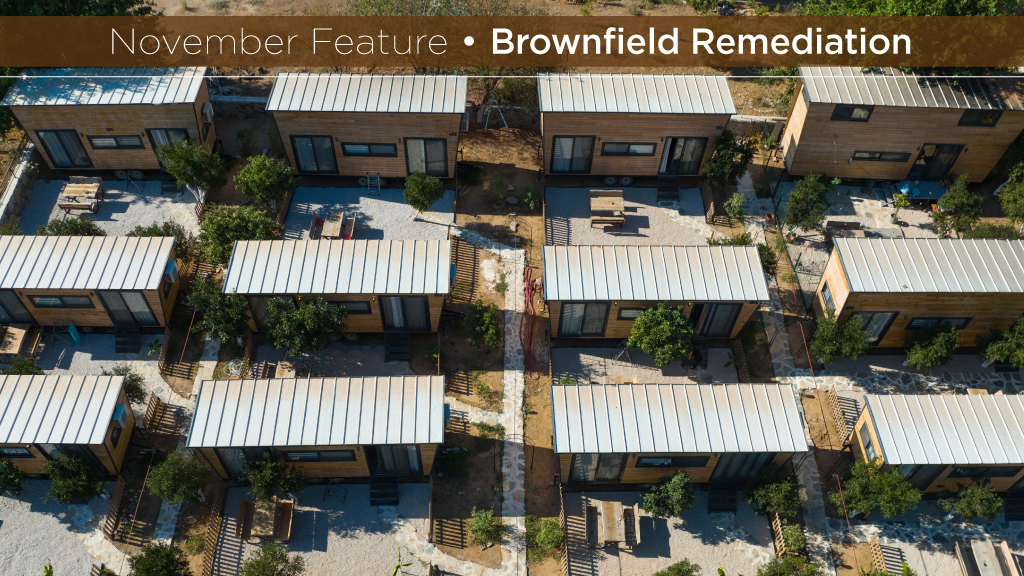The plan was to build 40 tiny homes in St. Thomas, Ont. on the site of a former brownfield.
The local YWCA had all their plans and applications lined up until they hit the wall. Then their $6.7 million application for the federal government’s $1.5 billion Rapid Housing Accelerator fund was denied in favour of some of their other 700 applications.
And that was a problem because the first upfront costs to remediate the brownfield were putting the plan further and further out of reach.
However, despite now being about $8 million short of their funding target, proponents believe this is just a small setback.
“We’re getting community donors to come forward now,” says St. Thomas YWCA executive director Lindsay Rice. “It was a very competitive process and as a non-profit we don’t have a lot of experience writing those applications.”
The site itself is also small pie shape, about 2.1 acres at a former handle factory in what was once a bustling railway town.
“We were able to get the rezoning, but it’s designated for full remediation and the cost is crippling,” she says.
Still, the organization and the community are determined to make plan A work since plan B with CMHC funding fell short.
“We are always looking for donations,” she said with the goal to raise the $8 million needed.
It’s unfortunate, says Meggen Janes, executive director of the Canadian Brownfield Network (CBN), because brownfields come in all shapes and sizes with many diverse locations.
“They also offer a huge return on investment,” she says and with more support from all three levels of government they could also provide a much-needed solution for housing.
“There’s a mushroom effect beyond increases from property tax,” she says, “it really helps enhance the community.”
As a result, other businesses spring up and more renovation and restoration takes place, much like a rising tide lifts all boats.
While there was a lot of interest in brownfield remediation 10 or 15 years ago it fell off the boil and funding shrank, she says.
The drive for affordable housing has put brownfields back in the spotlight and groups like the CBN are working now to keep it there and get the needed funding channelled into projects.
While huge projects like Hamilton’s $14 billion Randle Reef Sediment Remediation Project garner attention, it was an overnight success 40 years in the making.
The site is some 60 hectares with 615,000 cubic metres of contaminated sediment dating back to the 1800s.
It is, however at the completion stage.
Smaller lots — and those sites in rural areas where density isn’t an option — are also just as challenging.
Inner city gas stations, for example, are becoming prime targets for developers despite their generally small size and clean up costs because of their location and the density they can generate. It’s one reason why city gas stations are closing across Canada as their land value eclipses operational revenues.
Still, there remain many challenges, crunching the numbers to make brownfield remediation and development a worthwhile risk, says Janes.
“I was at a conference recently where it’s estimated one developer was paying $2 million per hectare (for brownfield) but not getting any reduction in development charges,” she says.
As a result, the final cost of any housing gets passed onto the end buyers taking the option of affordable homes off the table.
There needs to be financial incentive, she says, for small sites and large since both play a role in resolving the issue of underutilized and under-taxed lands and providing much needed housing.
Still, she adds, there are often pushbacks from the community as well, since brownfields become defacto parkland and locals become accustomed to seeing it as natural recreational facilities.
“Sometimes, there is friction with the community,” she says.
The Port Lands in Toronto have been a closely guarded secret with nature lovers, but new development is opening it up for both more industrial and commercial usage with prime views of the lakefront and city skyline and unparalleled beach access.
In doing so, however, it will radically change the city status quo which some will also argue over.
Ultimately, she says, what’s needed is a holistic team approach with government, developers and community pushing for change.
Janes cited former Brantford councillor Marguerite Ceschi-Smith who was tireless in promoting redevelopment of brownfields to unlock their value with financial tax incentives and development charge reductions. The result was eight sites that were remediated.
Ceschi-Smith has retired but her fight for brownfields as a resource continues, says Ward 5 councillor Brian Van Tilborg, noting he’s still carrying the torch.
“We’re still working on these, 18 years and still going,” he says.



Recent Comments